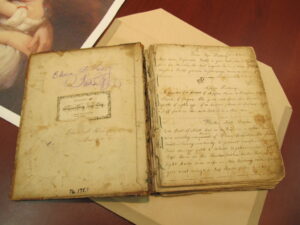
SOUTH BOSTON- The South Boston – Halifax County Museum of Fine Arts and History welcomed the general public to the grand opening of their newest exhibit “200 Years of Food Preservation: 1750-1950,” on October 3rd. Since the exhibit’s recent opening, it is well on track to become the most sought after and visited exhibit of 2019. The importance of food preservation in the lives of our ancestors cannot be stressed enough. A severe drought or a diseased crop could lead an entire region to starvation.
Today, Halifax County, Virginia is home to more than 30,000 residents and spans an area roughly 820 square miles. The local communities dotting the landscape are filled with tobacco barns of a bygone era and country stores along major roads. The largely 19th and 20th-century structures are juxtaposed against the rapidly urbanized district of Centerville located on the northern side of the town of South Boston, with its bountiful fast food restaurants, bulk grocery stores, and a copious amount of retail businesses.
Residents and travelers to the area have no trouble finding a quick bite to eat while milling about their daily routines, rewind the clock to the days of Halifax County’s inception and this would not be so. Without modern technology and conveniences, how did our ancestors ensure they had a reliable source of food?
Food Preservation in South Boston
For a brief glimpse into the role that food preservation techniques played in Southside Virginia’s history, it’s best to start at the beginning. In the year 1752, a strip of land to the southwest of the Staunton River and resting on Virginia’s southern border was given a new identity, that of a county called “Halifax.”
Though large sections of land were held by tobacco plantation tycoons of the colonial era, dozens of families made their way to the area for a fresh start and the opportunity to settle some land of their own. These new residents brought with them knowledge and experience which had been cultivated in the “Old World” over several thousand years. The ability to sundry herbs and salt meats had long been used by British colonists so had pickling, smoking, and brining just to name a few.
However, some of the most popular food preservation techniques today had yet to be invented or available to the mass public. These include: the tin can, refrigeration, pasteurization, etc. The list is a lengthy one yet our ancestors had to make do with the techniques available to them for everyday survival. Subsistence farming ruled the lands where farmers grew enough food to feed their households. The dishes that appeared on the colonial table depended on what crops were available to the household in a given season. Herbs could be hung from the rafters to dry and later made into seasoning for savory pies or used to flavor a soup. Similarly, smoked meat could be hung from the rafters of a smokehouse to keep pests away during the meat’s long storage.
Of changes made to food preservation since the founding of the county, the first innovation to reach the homes and tables of Halifax County came in the form of a published book, a cookbook. While cookbooks had been sporadically available to the American colonists for several decades, a woman by the name of Amelia Simmons was the first to publish a truly “American” cookbook utilizing indigenous ingredients such as corn. Her cookbook would strike a modern audience as being very odd. There is no distinct list of ingredients with exact measurements listed at the beginning of a recipe.
Almost completely absent was any indication as to how long food should be cooked or at what temperature. The value in this book came, in part, from the author’s desire to instruct readers in the ways of checking whether an ingredient had spoiled or if it was safe to use. As long as they had the ability to read, disadvantaged colonists, such as orphans, now had a means of learning safer food preservation techniques. From this first cookbook, housewives across the colonies began to keep cookbooks of their own from recipes that they had acquired from others.
The adoption of new food preservation techniques into the food culture of our community continued long after Amelia Simmons’s published her book. From Nicholas Appert’s first glass can to Louis Pasteur’s method of killing bacteria in food, the history of food preservation expands as the number of ways that food could be preserved multiplied.
To understand the full history, the South Boston – Halifax County Museum will tell this story in three parts.
- First, Harvest Time: From the Garden to the Table, now on display, investigated basic preservation methods where the food has seen little chemical change. Harvest Time will be available until November 30th.
- Salt, Sugar, and Snow: Preparing for a White Christmas will walk visitors through a history of brined meats stored on passenger ships bound for the new world to the Frigidaire, a modern refrigerator. While open on December 4 until January 25th, visitors will also have the special opportunity on December 8th from 2-4:30 PM to try holiday treats throughout the centuries.
- To complete this series, the museum will offer the exhibit Brine and Brandy: How Science and Chemistry Changed Food Preservation. Some food that can be preserved for months at a time is wholly unrecognizable from its base ingredients. From milk that can expire in hours to hard cheeses that can keep for up to three months, these wacky and weird changes will be brought to light.
Jennifer Bryant is the Curator of The South Boston – Halifax County Museum which is open every Wednesday from 10 Am to 4 PM at 1540 Wilborn Avenue of South Boston, Virginia. Our door is open and we hope to see you there! (434) 572-9200 www.sbhcmuseum.org ![]()
![]()

















